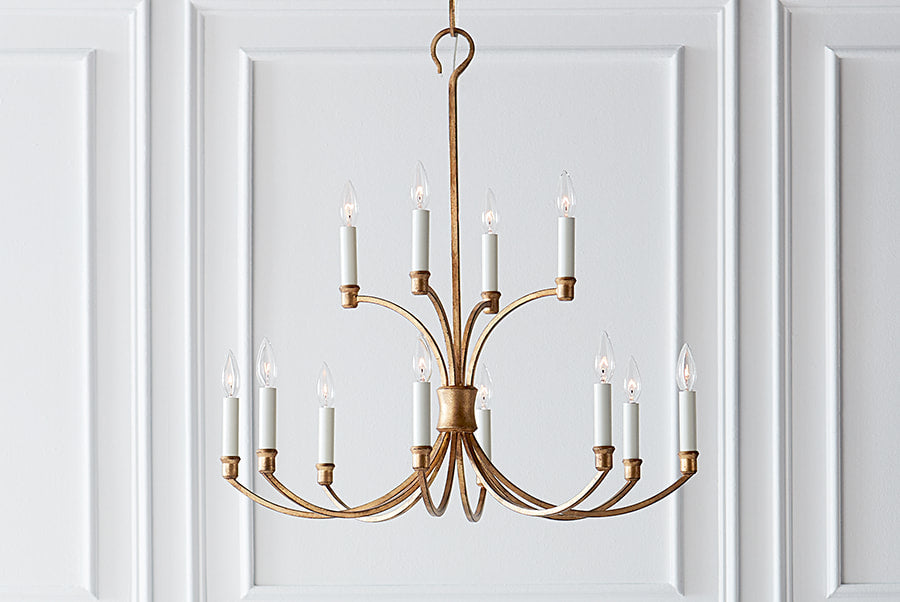
Factors you need to consider when choosing a ceiling fan
Summer is a fantastic time for most of us. The sun is shining, it is nice and warm and it's a great opportunity to get out and enjoy the weather. If you are living in a home with limited ventilation, and poor insulation, summer can be unbearable. We are here to help you avoid that hot stuffy feeling during summer with some fantastic deals on ceiling fans.
Ceiling fans are a great, economic way to stay cool in the Aussie summer heat. In this article we will discuss different factors that you need to consider when you are looking at which ceiling fans to buy.
1. Size of the room

The size of the room you are looking to put your fan into is definitely an important consideration. You don't want to get something so big that it blows you away, but get something too small and you risk not feeling cool and refreshed under your new fan in the summer.
The following table can help you understand what size of fan would be suitable for the type of room you are looking to cool down.
| Room Size (in sq.m) | Size of the fan (inches) |
| <9 | 48 |
| <20 | 52 |
| <40 | 60+ |
From the table you can see that the larger the room is, the bigger a fan you will need to look at to successfully keep nice and cool during the summer.
This will generally mean for a small bedroom you can opt in for the smaller fans of 48in and under. For living areas depending on size you would be looking to go 52in and above. For bigger outdoor areas you would be starting to get into the big fans of 60in+.
2. Ceiling Height

Generally, each fan will come with different recommendations to the particular heights that it would be best suited for. Ensuring that this is followed will make sure that you get the best efficiency from your fan while avoiding accidents. If you have a higher ceiling, most fans will also have different extensions that can be purchased to get it closer to the ground.
3. Multi-directional function

This is not a well known fact, but ceiling fans can warm, as well as cool your home. There is a switch on ceiling fans that allow it to move clockwise, or counter clockwise. When your fan blades are moving clockwise the hot air from your room is being pushed to the ground helping the room feel warmer. When the fan blades are moving counter clockwise this is helping to draw the hot ari away from you to cool you down.
We have pinpointed below different reasons and situations that you would use your fans in summer or winter mode, these have been taken from one of our suppliers Martecs website article 'Summer/Winter Ceiling Fans – Why Direction Makes a Difference'.
Reasons to use your ceiling fans in summer mode
By using your ceiling fan in Summer, you can save up to 40% on air conditioning costs. This is due to the fact that circulating the cool air with a fan means you can reduce the use of air conditioners. Further, fans create a wind chill effect on your skin, making a room feel up to 8 degrees cooler.
In Summer, a ceiling fan pushes cool air down, evaporation of perspiration and creating the wind chill effect mentioned above. This allows you to feel cooler without affecting room temperature. Further, an outdoor fan can help you feel cooler, allowing you to spend more time outdoors while entertaining.
What Direction Should a Fan Spin in Summer?
Most ceiling fan Summer modes spin counter-clockwise to direct cool air to the ground. Blade design also contributes to the downward movement of cool air. If you are not feeling cool air, then it is possible your fan is spinning the wrong way. The Summer/Winter mode can be found as a switch on the side of the fan or on the remote control.
Reasons to use your ceiling fans in winter mode
Choice’s recent article on “How ceiling fans can slash your heating costs” discusses how using a heater and ceiling fan together can help save you money,
“Running a heater and a fan might sound doubly expensive, but the opposite is actually true. Fans are far cheaper to run than hungry heaters (by a lot) and reverse mode means your heater has to do far less work to maintain a constant temperature.”
In Winter we close up our homes to heat them and retain the heat. But this creates limited circulation through the home. As a result, the warm air rises and you don’t feel all the benefits of your heating system.
Putting your fan in Winter mode allows the fan to draw air up into the centre of the room, then redistributing it down the walls to the floor, mixing the air in a room. This actually warms the room up more than just heating alone. And as Choice author Jason Treuen points out,
“So the heater and fan’s total power consumption is less than half used by the heater alone, which can make quite a difference to your bill over time. Here’s the heatmap showing how the fan circulates hot air near the ceiling more evenly.”
Using your fan in Winter mode, combined with heating can actually can save you up to 15% on your heating costs. It also reduces the cost of heating fuel, electricity, or gas. Modern ceiling fans will have a Winter mode, that allows your fan to redistribute warm air around the room and your home in general.
When air is no longer stagnate in a room, meaning there is less condensation and humidity in your room. It also lowers the risk of dehydration.
What Direction Should a Fan Spin in Winter?
If your fan is in Winter mode, it should be spinning clockwise. The air won’t be cooling as it is in Summer mode. So if you don’t feel a cool breeze coming off your fan, then you are in Winter mode. You don’t want to cool the air down in Winter, rather you want to draw the air up.
When running your fan in Winter, it is better to have it on a lower setting than you would use in Summer. You want to achieve a gentle mixing of the air, not a draft. The exception to this is if you have a large space or high ceilings.
How to switch between summer/winter mode
Modern ceiling fans, feature easy Summer/Winter mode switching. Fans generally feature a switch on the hub or motor housing of the fan. These switches are designed so as not to detract from the aesthetic of the fan.
4. Fan noise

Most new fans nowadays are made to be very quiet. DC fans are made to be more quiet than what an AC fan is, but I don't think that you would notice much of a difference in modern fans. There is nothing worse than a noisy fan when you are trying to relax or sleep.
When you are ready to get your new fans, make sure to visit one of our 7 stores or give our fantastic sales assistants a call to get a simple and easy quote today. Otherwise feel free to have a look through our ceiling fans online to pick your fans and get free postage for orders that qualify.
It's a hot summer night, you turn your ceiling fan on high to cool down, as the fan gets up to speed it begins to wobble and make so much noise that you begin to think "Is my ceiling fan about to fall off?". There can be many reasons why your ceiling fan is making so much noise however the most common reason is due to unstable ceiling fan blades, improper ceiling mounts, or dust accumulation. Regardless, continuous usage of a wobbly fan will decrease the quality of operation due to increased wear on the motor and potentially make the fan even more unstable.
Step 1. Ensure Ceiling Fan Mount and Fittings are Properly Installed.
- Assess the contact point between the ceiling fan and the ceiling mount and ensure that the fan has been installed correctly.
- Check that the blades are securely screwed into the blade holders and fan motor.
- Clean the ceiling fan's motor and blades - the dust may be causing the ceiling fan to be unbalanced and noisey.
- Turn on the ceiling fan to check if the wobble is still present.
- If the wobble is still present then it may be because a fan blade is not correctly aligned or slotted into the blade holder.
Step 2. Balance Ceiling Fan Blades
- If your ceiling fan blades are unbalanced then you can usually address this by either finding which blade(s) are out of alignment or unbalanced and adjusting them by either adding counterweights or reslotting the blades.
- You can use something such as a coin and tape or a clip to serve as a counter weight on the suspected blade.
- Start by placing the counterweight on the blade close to the center and turning on the fan to see if the wobble is persisting. If so, repeat this while slowly move the coin towards the outer part of the blade until you've eliminated as much of the wobble as possible.
If this hasn't helped then it could potentially be due to a low-quality ceiling fan or mechanical issue within the ceiling fan motor. This would require a qualified electrician or manufacturer to review the fan and its installation.
 Australia Wide Shipping from $9.95! FREE SHIPPING ON ORDERS OVER $250*
Australia Wide Shipping from $9.95! FREE SHIPPING ON ORDERS OVER $250*











